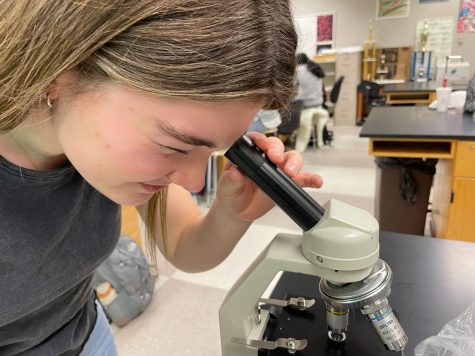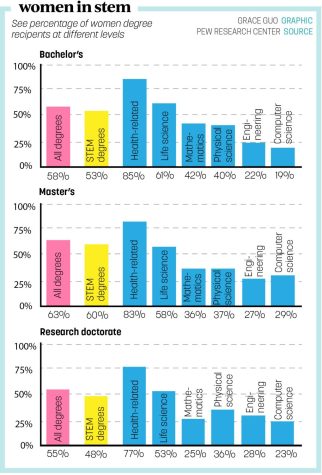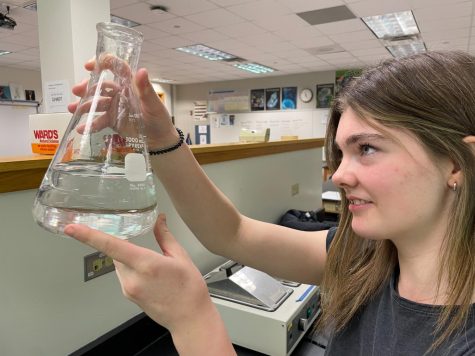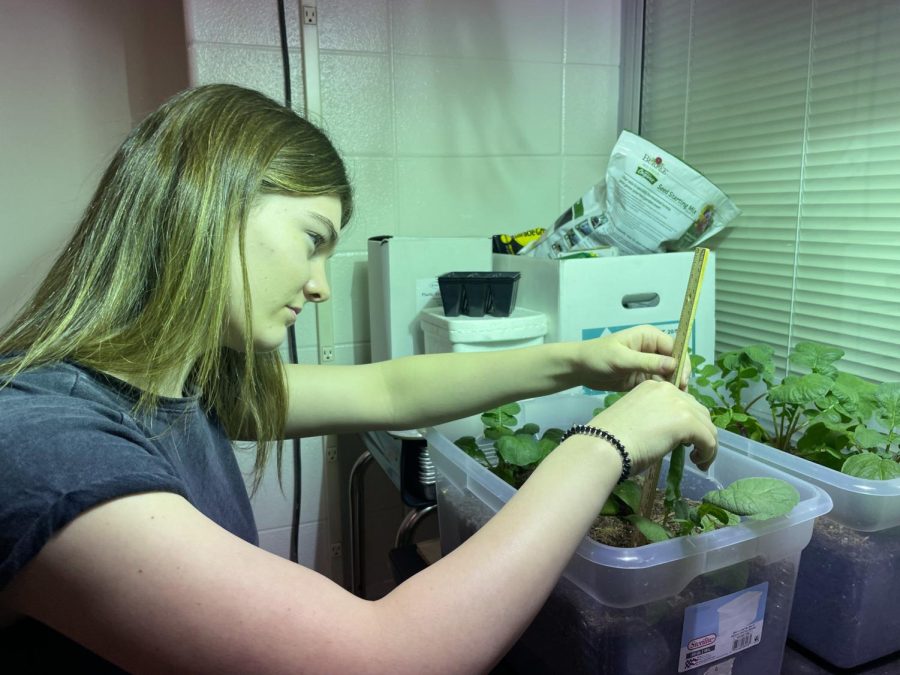Junior Kenzie Mattingly said she has a dream of working in the medical field as a woman once she graduates. However, she said the STEM field is still not quite an equal community for women compared to men.
“I don’t necessarily think that women today are looked down upon in the medical field. However, I do believe there can be a tendency for women to be overlooked in the medical field,” she said.
Mattingly said she has had many experiences within her classrooms where she doesn’t feel listened to. These moments have caused her to grow fearful of showing her intelligence.

“From first-hand experience, there have definitely been times when I’ve been afraid to answer questions or give my piece of input,” she said. “This fear of mine is definitely exemplified when in groups of guys because I don’t want to play into a stereotyped community of being unintelligent specifically due to my gender.”
Thendral Kamal, Purdue University sophomore and Delta Airlines co-op employee, majors in Aeronautical & Astronautical Engineering. She said she has had many ambitious dreams within the STEM field and as a result, has had times where she feels overlooked.
“Ever since I was 13 years old, my ambition was to become the first Indian woman to set foot on the planet Mars,” Kamal said via email. “There were multiple moments in my life where I was told that I couldn’t pursue a career in aerospace engineering as a woman because it is a ‘man’s world.’ I have been in situations where my opinion was ignored or overlooked, in favor of my male counterparts.”

Sophomore Rabya Mohsin who is interested in medicine and computer science said she also believes that the stereotypes of women within the STEM field are still prevalent.
“Even ten years ago (the stereotypes) are still the same. Even if you look at it now there’s no changing and it’s inevitable because of society and the stigmatism towards women in STEM,” Mohsin said. “I’m glad that more people, especially in our generation, are looking towards some of these fields and pursuing that sort of career.”
Mohsin said she feels as if the recent increased number of women pursuing goals in STEM has made her more comfortable and confident with wanting to go into this field.
She said, “I have definitely seen more progressiveness in the field compared to like ten years ago. It’s definitely better now (and) I feel more safe about reaching out to teachers and people about my interest in the field.”
Kamal said society’s progression towards equality for both men and women within the STEM field has caused her to also feel inspired and confident with herself and adds that coverage within the media is important to young girls interested in the field.
“Despite the challenges and the existing bias, progress is improving steadily,” Kamal said. “We are also beginning to see a steady improvement in more women of color, (for example,) Hispanic, Asian, Black and American Indians, joining the cohorts of women taking up occupations in the STEM workforce. More female engineers and scientists are visible in TV shows, books, movies, classroom, etc. than ever, and are showing girls how to walk in their own shoes.”

As Women’s History Month comes to a close, Mattingly said she has also seen some progression within the field, but still more often than not sees an unequal advantage for the men in STEM.
“I believe that the world has progressed greatly with this issue,” Mattingly said. “However, I believe that all women still experience disparities consistently throughout their lives. I feel that now these disparities consist less of discrimination and more so of less inclusivity of women in groups of primarily men.”

































![AI in films like "The Brutalist" is convenient, but shouldn’t take priority [opinion]](https://hilite.org/wp-content/uploads/2025/02/catherine-cover-1200x471.jpg)









































![Review: “The Immortal Soul Salvage Yard:” A criminally underrated poetry collection [MUSE]](https://hilite.org/wp-content/uploads/2025/03/71cju6TvqmL._AC_UF10001000_QL80_.jpg)
![Review: "Dog Man" is Unapologetically Chaotic [MUSE]](https://hilite.org/wp-content/uploads/2025/03/dogman-1200x700.jpg)
![Review: "Ne Zha 2": The WeChat family reunion I didn’t know I needed [MUSE]](https://hilite.org/wp-content/uploads/2025/03/unnamed-4.png)
![Review in Print: Maripaz Villar brings a delightfully unique style to the world of WEBTOON [MUSE]](https://hilite.org/wp-content/uploads/2023/12/maripazcover-1200x960.jpg)
![Review: “The Sword of Kaigen” is a masterpiece [MUSE]](https://hilite.org/wp-content/uploads/2023/11/Screenshot-2023-11-26-201051.png)
![Review: Gateron Oil Kings, great linear switches, okay price [MUSE]](https://hilite.org/wp-content/uploads/2023/11/Screenshot-2023-11-26-200553.png)
![Review: “A Haunting in Venice” is a significant improvement from other Agatha Christie adaptations [MUSE]](https://hilite.org/wp-content/uploads/2023/11/e7ee2938a6d422669771bce6d8088521.jpg)
![Review: A Thanksgiving story from elementary school, still just as interesting [MUSE]](https://hilite.org/wp-content/uploads/2023/11/Screenshot-2023-11-26-195514-987x1200.png)
![Review: "When I Fly Towards You", cute, uplifting youth drama [MUSE]](https://hilite.org/wp-content/uploads/2023/09/When-I-Fly-Towards-You-Chinese-drama.png)
![Postcards from Muse: Hawaii Travel Diary [MUSE]](https://hilite.org/wp-content/uploads/2023/09/My-project-1-1200x1200.jpg)
![Review: "Ladybug & Cat Noir: The Movie," departure from original show [MUSE]](https://hilite.org/wp-content/uploads/2023/09/Ladybug__Cat_Noir_-_The_Movie_poster.jpg)
![Review in Print: "Hidden Love" is the cute, uplifting drama everyone needs [MUSE]](https://hilite.org/wp-content/uploads/2023/09/hiddenlovecover-e1693597208225-1030x1200.png)
![Review in Print: "Heartstopper" is the heartwarming queer romance we all need [MUSE]](https://hilite.org/wp-content/uploads/2023/08/museheartstoppercover-1200x654.png)




